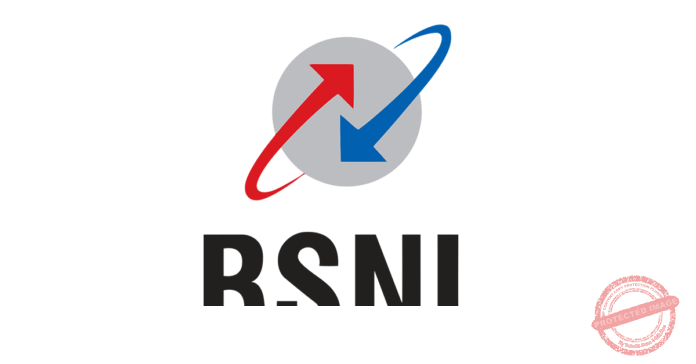BSNL is back with a rise in its subscriber base. At least this is what its minister of state for Communications and Rural Development Dr. Pemmasani Chandra Sekhar claimed in a written reply to a question in the Lok Sabha recently.
As per the minister, BSNL had seen a rise in its subscriber base, increasing from 8.55 crore to 9.1 crore over the past fiscal year. This recovery is supported by a Rs 3.22 lakh crore revival package sanctioned over the last three years. To ensure accountability and results, each of BSNL’s 32 telecom circles was now developing its own business plan under a decentralised strategy. The Ministry has also conducted a 12-hour Strategy and Business Development Session 2025-26 with all Chief General Managers, a first in the sector’s history.
The Union Minister also highlighted India’s successful development of an indigenous 4G technology stack. The core software for this system has been developed by C-DoT, a public sector organisation, while the radio access network hardware is being manufactured by Tejas Networks. System integration is being handled by TCS.
Out of 95,000 towers sanctioned for rollout, 75,000 are already operational, with Rs 20,000 crore in capital expenditure already invested. BSNL’s 4G services are now live and being optimized, with a transition to 5G planned in the coming phase.
The details of subscribers in the country for various Telecom Service Providers including BSNL as collected and published by TRAI from time to time are available on its website. Further, in line with Atmanirbhar Bharat initiative, BSNL has placed purchase order for indigenously developed 4G sites for pan India deployment. Supply of 4G equipment has started from September 2023 and as on June 30, 2025, a total of 95,537 of 4G sites had been installed and 90,035 sites were ON-Air. The equipment is 5G upgradable.
Regarding the performance of public sector telecom undertakings, the Minister noted that as a result of the revival packages given to BSNL, the government back telecom giants has started earning operating profits from financial year 2020-21 and BSNL has earned net profit of Rs 262 crore and Rs 280 crore in Quarter 3 and 4 of Financial Year 2024-25 respectively.
Improving telecom infrastructure in hilly areas under Digital Bharat Nidhi
To improve telecom infrastructure in the hilly areas across the country, the government is implementing various projects under Digital Bharat Nidhi (erstwhile USOF) such as (i) 4G Saturation project to provide 4G mobile services in uncovered villages across the country, (ii) Border Out Posts (BoP)/Border Intelligence Posts (BIP) project for the provision of 4G based mobile services at BoP/BIP’s, (iii) Schemes for providing mobile services in Left Wing Extremism (LWE) affected areas, (iv) Scheme for providing mobile services in Aspirational Districts, (v) Comprehensive Telecom Development Plan (CTDP) for mobile connectivity in the NER to provide mobile coverage in uncovered villages and along the National Highways, and (vi) BharatNet project which is being implemented in a phased manner to provide broadband connectivity to all the Gram Panchayats (GPs) and villages on demand in the country.
Digital and Broadband Connectivity
As of May 2025, out of 6,44,131 villages in the country (as per data of Registrar General of India), 6,29,027 villages i.e. 97.65% villages were covered with mobile connectivity and out of these, 6,23,512 villages i.e. 96.80% villages have 4G mobile connectivity.
The government, through funding from Digital Bharat Nidhi (DBN), is implementing various schemes for provision of high-speed internet/data and 4G mobile services in the rural, remote and border areas of the country. As of June 2025, 18,739 4G sites (including 1276 sites upgraded to 4G) have been commissioned under DBN funded mobile schemes, covering 26,672 villages/locations in the country.
Also the BharatNet project was being implemented in a phased manner to provide connectivity to all the Gram Panchayats (GPs) for broadband services, such as Wi-Fi Hotspots, Fibre to the Home (FTTH) connections etc. Further, the Union Cabinet has also approved Amended BharatNet Program for provisioning connectivity to all GPs in the country in ring topology including upgrading existing network and connectivity to about 3.8 Lakh non-GP villages on demand basis. As of June 2025, a total of 2,14,325 GPs have been made service ready under BharatNet project in the country. So far, 13,01,193 Fiber to the Home (FTTH) connections have been provided under BharatNet project in the country, including the rural schools.
The Government of India, as part of the Budget 2025, has also announced provision of broadband connectivity to all Government secondary schools in rural areas under BharatNet project to enhance digital infrastructure in remote areas.
An advisory was issued by the Department of School Education and Literacy to all the States & UTs to enter into an MoU/ Agreement with BSNL and provide FTTH Internet connection to all the Government Schools which have computing devices.
All States/UTs have been advised that the Internet Charges can be met from recurring charges being released under Samagra Shiksha or can be met from any other State/UT Government funds.






























